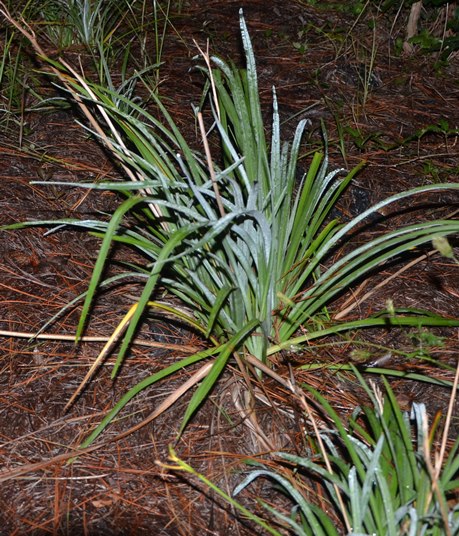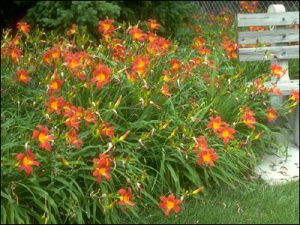“A penny saved is a penny earned” is the famously frugal advice from Poor Richard’s Almanac. The author Benjamin Franklin, elder statesman and founding father of the United States, offered this simple pearl of wisdom to 18th century American colonist to remind them to cautiously manage their assets.
This concept has met the test of time and had been resurrected in a variety of guises. Individuals, families, companies and governments have all applied a variation of this resource management concept, especially when their economic outlooks are challenged.
As basic as the idea is it can be applied to almost any situation, even the home landscape. Daylilies, the commonly encountered flowering ornamental in many 21st century gardens, is an excellent example of getting the most return for the least output.
The daylily is a popular flowering perennial with East Asian origins which has adapted well to Florida landscapes. Plants are available in a wide variety of growth habits, flower shapes and colors, including yellow, orange, red, pink, purple, near-white and shades and combinations of all of these.
Flowering starts in March for early-season bloomers with late-season cultivars starting in mid-May. The typical bloom period is about four to seven weeks, although some varieties bloom even longer.

Daylilies are colorful and easy to grow. Propagation is easy this time of year, just dig, separate, and replant.
As their name accurately indicates, daylilies are members of the lily family, in the genus Hemerocallis. “Hemero” is Greek for “day” and “callis” for “beauty,” so the scientific name translates to beauty for a day.
For the adventurous eater, the flower buds and petals of daylilies are edible raw, boiled, stir-fried, steamed, stuffed, or battered and fried. Dried daylily petals, called “golden needles,” are used in numerous Chinese dishes.
Many of the modern varieties of daylilies available today have been developed from native Chinese species. Early settlers from Europe and Asia brought many of the original species with them to America.
Daylilies grow best in full sun or filtered shade. The darker colored red and purple varieties flourish better in partial shade, while light colored yellows, pinks and pastels varieties need full sun to bring out their best colors.
The filtered light level under pine trees is ideal for growing daylilies. Heavy shade should be avoided because it will cause thin, spindly growth and poor flowering.
The soil pH should be between 6.2 and 6.8, with 6.5 being optimal.
The soil of daylily beds should be topped with three to four inches of organic matter, such as peat, compost, or well-rotted manure. The amended soil should be mixed or tilled, leveled and then moistened.
Daylilies survive dry conditions well because of their extensive root systems. However, the number and size of blooms, plant growth, and overall vigor can be adversely affected by prolonged drought.
Daylilies multiply fairly rapidly and plant division is an easy way to propagate them for new locations in the home landscape or to share with friends. Division is best done immediately after the flowering season.
Dig the entire clump and shake or wash off the soil without damaging the roots. It is easy to see where the divisions can be made with smaller clumps being easily pulled free to establish a new planting.
The home gardener can expand and share the beauty of these perennials and only spend a little time to accomplish this. No doubt Ben Franklin and Poor Richard would approve.
For more information, check out this excellent publication titled “Daylilies for Florida”.
- Get Your Trees Ready For The Winds of October - October 8, 2019
- Feeding Caterpillars Aren’t Always Cute - August 10, 2018
- Wild Azaleas - May 23, 2018

